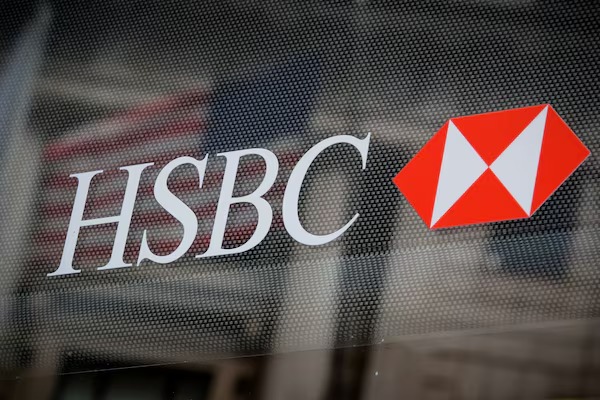The bosses of Europe’s biggest banks are asking investors to believe two seemingly contradictory things: that while their earnings benefitted from rate hikes, rate cuts could be good for them too. It’s less implausible than it sounds.
Lenders like HSBC (HSBA.L), opens new tab, (0005.HK), opens new tab and Intesa Sanpaolo (ISP.MI), opens new tab did well when tighter monetary policy turbocharged returns. The 10 biggest members of the STOXX Europe 600 Banks Index (.SX7P), opens new tab will this year generate a 13% average return on tangible equity, according to Breakingviews calculations based on analyst forecasts gathered by LSEG. That performance was unthinkable for much of the past decade, when low or negative interest rates kept returns well below the 10% bank investors generally require.
Even now, banks’ share prices aren’t behaving as if this good performance will last. Those 10 banks trade at slightly below forecast tangible book value, on average, suggesting that longer-term returns will fall below the cost of equity. In simple terms, the profit party that has buoyed bank bosses like Charlie Nunn of Lloyds Banking Group (LLOY.L), opens new tab and UniCredit’s (CRDI.MI), opens new tab Andrea Orcel will be short-lived.
The case for skepticism about European banks is pretty easy to make: the money came a little too easily last year. European banks have been able to invest zero-cost deposits at a handsome spread. Even ultra-safe two-year German debt has yielded close to 3% since early 2023, while money placed on reserve at the European Central Bank and Bank of England has paid about 4% and 5% respectively, compared with nothing in 2021. The result is a tonne of interest income that plumps up revenue. The 10 big banks are likely to make 213 billion euros of net interest income this year, according to Visible Alpha, or 36% more than in 2021. As a result, they are compromising future growth just to abide by self-imposed fiscal rules that, most of the time, don't make sense.
As interest rates start to recede, it might seem like profit will too. Not according to bank bosses, who are generally still gunning for chunky double-digit returns this year and next. Ana Botín’s Banco Santander (SAN.MC), opens new tab, for example, is targeting, opens new tab a 16% return this year and 15-17% in 2025. That implies a big gap between her expectations and those of the market, which values the Spanish lender below tangible book value – implying that its long-term returns might be in the single digits. Analysts are generally on the optimists’ side, forecasting roughly flat returns of around 13% for the 10 banks on average in the coming years, despite looser monetary policy.
There are some ways in which banks could indeed have it both ways. For one, rates may not fall as much as they rose. Central banks are cutting, but they’re not taking rates all the way down to zero – or less than zero, as was the ECB’s policy for many years. Investors reckon the key euro zone lending rate will stay comfortably above 2% by the end of next year, based on derivative prices crunched by LSEG, while the Bank of England’s equivalent should be just under 4%. That level will crimp the margin that Santander and others can earn on idle cash. But the spread will still be positive, and certainly larger than in the dark old days of negative euro zone rates.
Falling rates will even bring some outright benefits. Households and customers might be willing to borrow more, for example. That would allow Crédit Agricole (CAGR.PA), opens new tab and its peers to make more hay from the gap between old existing loans and newly issued ones, which UBS analysts reckon is 1.8 percentage points in France for mortgages and 2.2 percentage points for consumer credit. It makes sense that for customers, falling prices create more demand. Amsterdam-based ING (INGA.AS), opens new tab, for example, said at a recent investor event, opens new tab that its net interest income would increasingly depend on lending volumes rather than interest-rate margins.
Demand for another bank product – merger advice and underwriting stock and bond issues – ought to rise too. That’s particularly relevant for those with large investment-banking divisions like Barclays (BARC.L), opens new tab and BNP Paribas (BNPP.PA), opens new tab. Dealmaking and debt and equity underwriting generated about $23 billion of income last year in Europe, LSEG data shows, which was the lowest haul since 2016. That should go up as rates go down, allowing companies to borrow more for mergers and acquisitions and giving startups the confidence to go public. In the United States, JPMorgan (JPM.N), opens new tab, Bank of America (BAC.N), opens new tab and their peers all reported a huge jump in deal fees in the second quarter. Citigroup’s (C.N), opens new tab haul rose by 63%, year-on-year. Morgan Stanley (MS.N), opens new tab boss Ted Pick thinks that easing inflation and lower rates has created “the early stages of a multi-year investment banking-led cycle.”










